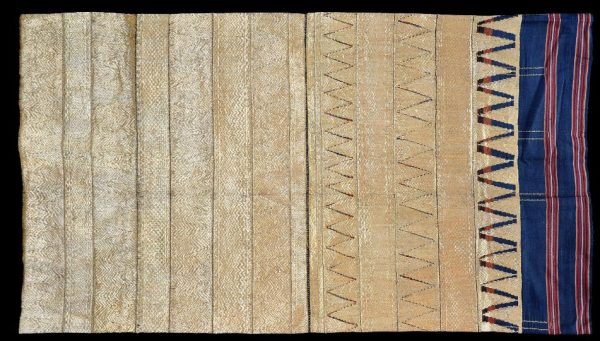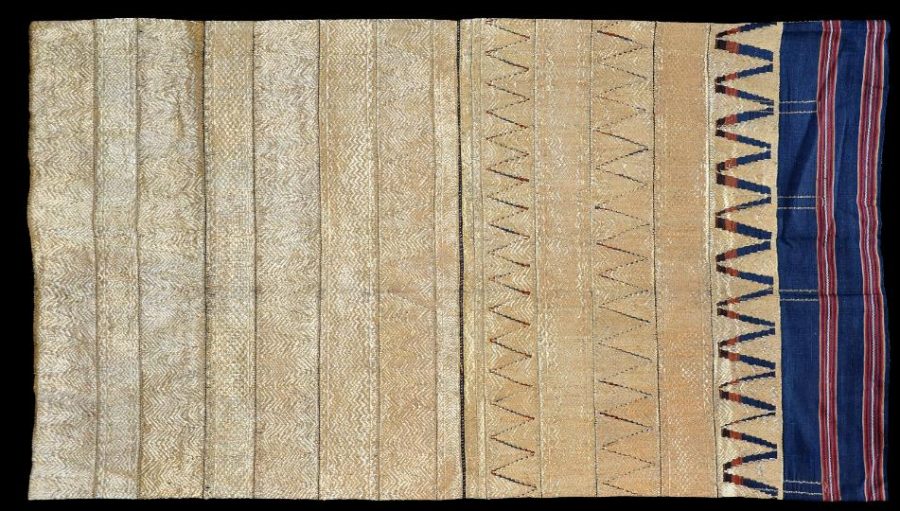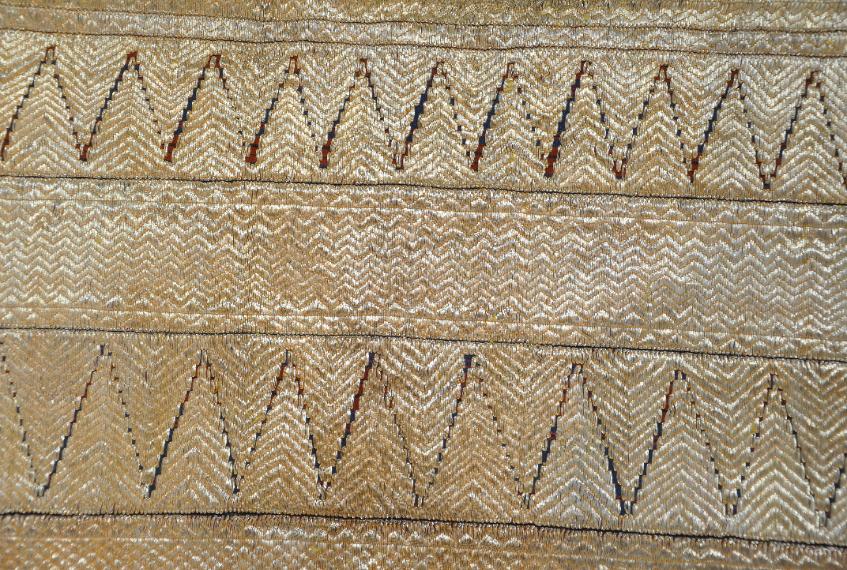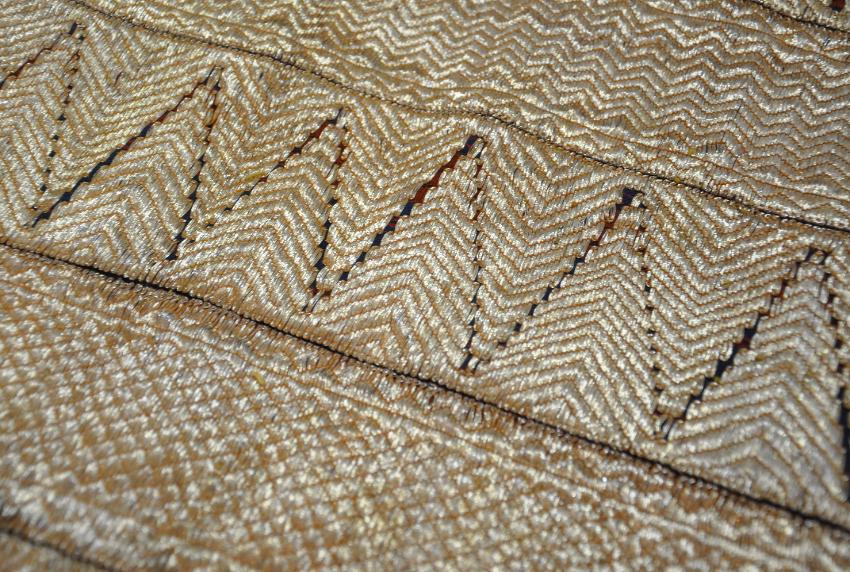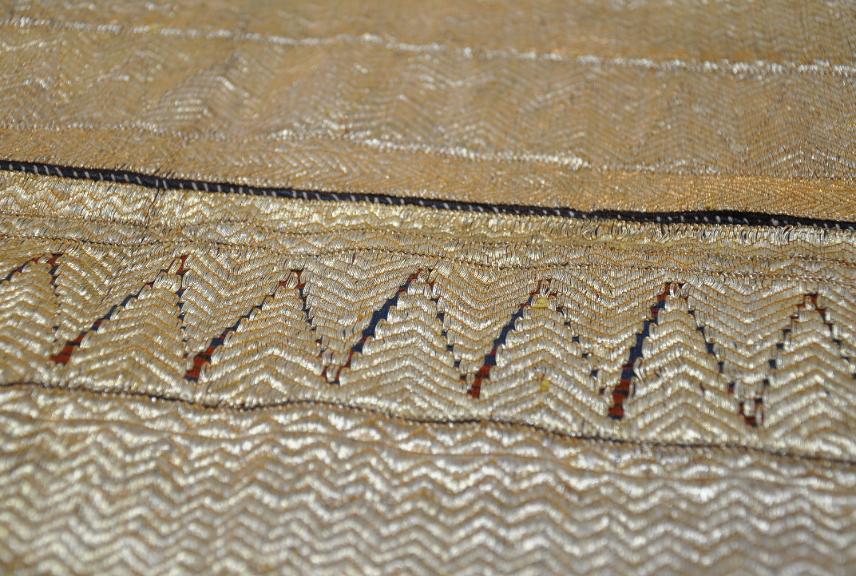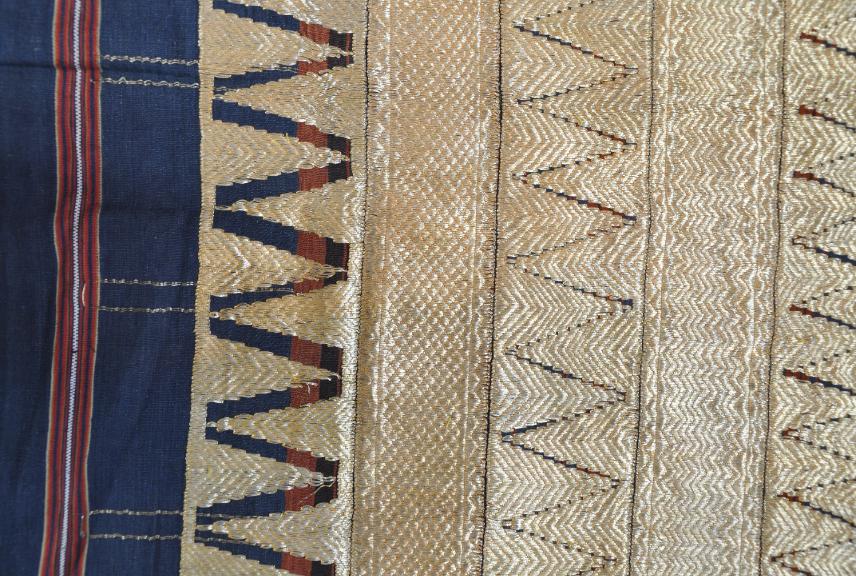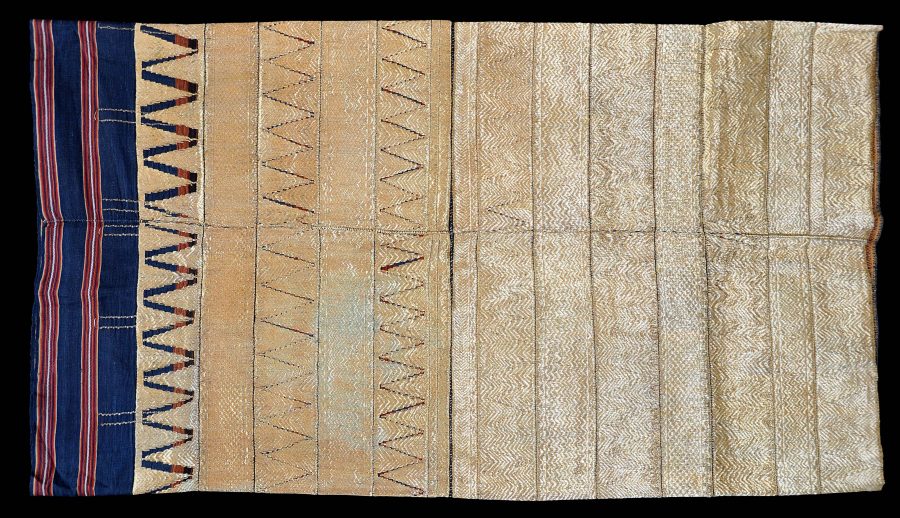Enquiry about object: 3815
Lampung Woman’s Ceremonial Skirt (Tapis Jung Sarat)
Abung or Pubian Peoples, Lampung, South Sumatra, Indonesia circa 1920
length: 115cm, width: 63cm (these are the dimensions for one side of the double-sided skirt)
Provenance
Acquired in the UK, from the estate collection of Dr George Yuille Caldwell (1924-2016). Dr Caldwell, an English-born physician moved to Singapore in the 1950s, from where he built up a collection of Indonesian textiles and other ethnographica.
This tapis (ceremonial skirt) is from the Abung people of North Lampung in South Sumatra, or the Pubian people of central Lampung. It remains closed along the seam and sewn as a skirt (rather than having been opened for display purposes).
It comprises silk-cotton dyed with indigo and red dyes and is densely embroidered with metallic thread wrapped in gold in geometric patterns and triangular pucuk rebang (bamboo shoot) motifs. The extraordinary use of gold-wrapped thread makes the skirt heavy – almost too heavy to be worn comfortably, and so such skirts were worn for only brief periods and for ceremonial occasions. Indeed, among such skirts, this example is unusually densely embellished with gold to the point whereby the underlying base cloth no longer is visible and instead is covered in a wall of gold-wrapped thread.
See Brinkgreve & Stuart-Fox (2013, p. 111) and Totton (2009, p. 41) for similar examples.
One name given to this genre of cloths –tapis tua – literally means the ‘ancient skirt’ (Maxwell, R., 2003, p, 184.) But the Abung term for this specific type is tapis dewasano (‘fully-laden cloth’), or tapis jung sarat in Indonesian (Totton, 2009, p. 99).
This spectacular use of gold-wrapped thread confirms the skirt’s origins from among the Abung people. Noblewomen wore such cylindrical skirts on ceremonial occasions. Or such skirts were worn by brides form wealthy families. The wealth for such ostentations displays was afforded by the lucrative pepper trade with which the south of Sumatra became associated during the colonial era, and which benefited the Abung directly.
The skirt is in excellent, if not stunning, condition. There are few or no losses and no repairs.
References
Brinkgreve, F., & D.J. Stuart-Fox (eds), Living with Indonesian Art: The Frits Liefkes Collection, Rijksmuseum Volkenkunde, 2013.
Maxwell, R., Sari to Sarong: Five Hundred Years of Indians and Indonesian Textile Exchange, NGA, 2003.
Maxwell, R., Textiles of Southeast Asia: Tradition, Trade and Transformation, Periplus, 2003.
Totton, M.L., Wearing Wealth and Styling Identity: Tapis from Lampung, South Sumatra, Indonesia, Hood Museum of Art, 2009.
Vanderstraete, A., Magie van de Vrouw: Weefsels en Sieraden uit de Gordel van Smaragd, (The Magic of Women), Wereldmuseum, 2012. :


